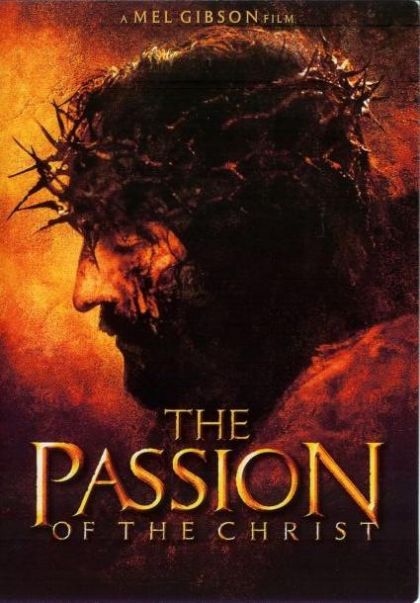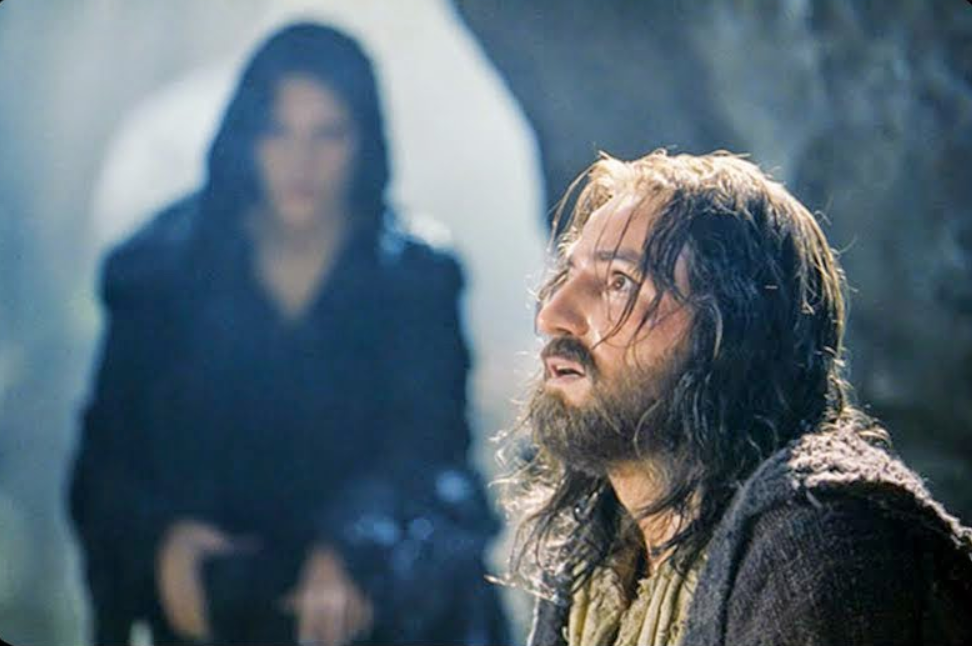Where were you on February 25th, 2004? Well, we might not remember the exact date, but most of us (except the youngsters) will remember the event. On this date seventeen years ago Mel Gibson’s The Passion of the Christ was released. That year Ash Wednesday fell on the 25th of February, and Gibson intentionally timed the release of his film, a cinematic depiction of the last 24 hours of the human life of Jesus, to coincide with the beginning of Lent.

It’s hard to overstate the impact the film made at the time. It remained the largest grossing non – English Language film of all time (all the dialogue was in Aramaic and Latin) until 2017, when it was overtaken by something called Wolf Warrior 2 (your guess is as good as mine). It sparked quite a bit of controversy, as well as some substantial discussion, about antisemitism and violence in films, and about the meaning of the suffering, death and resurrection of Jesus Christ. The film was also credited with bringing many Christians back to a closer embrace of their faith, and with bringing some non-Christians to conversion.
In 2014 critic Mark Steyn marked the tenth anniversary of the release of The Passion of the Christ with an update of his original review from 2004, which he has apparently continued to update since. Reading Steyn’s resurrected review helped me pull together various stray thoughts in my mind, which resulted in a blog post I called “Steyn, Spong, Kempton, And The Passion of the Christ”. I suppose if Steyn could republish his piece ten years later, I can repost mine after seven (it is Throwback Thursday, after all). More to the point, the issues raised are still as relevant, if not more so, as they were seven years ago. My (only slightly updated) post is below:
Sometimes there is a certain event that perfectly crystallizes important social trends: such was Mel Gibson’s The Passion of the Christ. We may forget ten years later [now 17] the magnitude of the film’s impact. Last week Mark Steyn marked its ten year anniversary with an updated review [here]. While I disagree with some of his points (more on this below), Steyn does a good job of capturing the movie’s social and spiritual significance, while at the same time recognizing some of its artistic weaknesses. His most incisive observation is that the controversy sparked by the movie was “not between Christians and Jews, but between believing Christians and the broader post-Christian culture, a term that covers a large swathe of the media to your average Anglican vicar.” There’s a lot packed in to that brief quote, including a recognition of the sad reality that a very large part of that “post-Christian culture” is made up of people who claim to be (and very often think that they are) “believing Christians”. Among protestants the two groups break down to some degree along denominational lines, although even the most “progressive” churches have some members who adhere to a more traditional Christian belief and practice; in the Catholic Church we’re all thrown in together, which tends to keep things lively.

One of those devout, traditional Christians in a denomination that was much less so was the late left-wing journalist and commentator Murray Kempton, who was an Episcopalian. I remember reading one of his columns at least a decade before The Passion came out in which he was comparing Catholic Cardinal O’Connor, then Archbishop of New York, to Episcopalian bishop John Shelby Spong of Newark, New Jersey. As I recall, Kempton had less than kind words for co-religionist Spong, who had made himself a darling of the cultural elite by publicly doubting the Resurrection and by dismissing orthodox Christian morality. At the same time, the columnist lavished high praise on the Catholic Cardinal, with whom he doubtless disagreed on many points, but whose determination to teach without apology the faith as received from the Apostles was undeniable. I don’t recall the Kempton’s exact words from a distance of more than twenty years, but I have retained a very clear recollection of his assertion that a man who could not affirm the most essential Christian doctrine had no business being a bishop. To Murray Kempton, it was a matter of integrity: be what you are!
Murray Kempton and Cardinal O’Connor are no longer with us, but John Shelby Spong, it seems, lives on. The now-retired Episcopal bishop was a major focus in an article published in the Washington Post on Holy Saturday [2014] which assures us that “The Gospel Story Of Jesus’ Resurrection Is A Source Of Deep Rifts In The Christian Religion”. You may wonder exactly what “Christian Religion” they’re talking about. After all, belief in the Resurrection is, and always has been, the absolute minimum requirement for being a Christian. St. Paul says that if Christ didn’t rise from the dead we are the most pitiful of men (1 Cor. 15:19) – and he had never even met Bishop Spong. The Resurrection has always marked the rift between “The Christian Religion” and everyone else: on one side you’re a Christian, on the other you’re not. In any case, Easter has become an annual occasion for the secular press to celebrate self-proclaimed Christians who deny the divinity of Christ, or the latest hyped-up claim that such-and-such archaeological discovery “proves” that Jesus had brothers, children, wives, etc. Why should they care? Because the Church and believing Christians are all that stand between them and the “progressive” program of re-making the world in the image of whatever passing notion appeals to them at the time.

Which brings me back to Steyn’s review of The Passion of the Christ. One of his criticisms with which I disagree is his take on Gibson’s Satan. Steyn dismisses him (Her? It?) as “a cross between Nosferatu and Jessica Lange in All That Jazz”. I don’t actually disagree with that description, but where Steyn sees it as a misstep, I found the creepy androgyny of Gibson’s Evil One (played in the film by actress Rosalinda Celentano) to be a particularly astute touch, especially for a 21st century audience. Non Serviam! “I will not serve!” is the essence of Satan; Lucifer’s refusal to be what God made him to be lies at the heart of his fall. His refusal here to be either male or female is a brilliant counterpoint to the creation story in Genesis: “Male and female he created them (Genesis 5:2)”. It also, of course, aptly reflects the refusal by so many in our world today to accept this basic truth about human nature, not just in our sexual relationships but even in our very bodies. Which, in turn, brings us back to Integrity, which is, after all, about much more than telling the truth: it is about being a fully integrated whole, about truly being who you are.
This is where Steyn, Spong, Kempton and The Passion of the Christ all come together. While The Passion was a big hit among the believing crowd, there are nevertheless any number of reasons why a devout Christian might not like the film. Its effect, however, has been to cast a bright light on the growing divide between enduring Christian belief and the Spirit of an Age that more and more is succumbing to what Cardinal Ratzinger, just before he became Pope Benedict XVI, called “the dictatorship of relativism”, an age in which integrity has been conquered by ideology. The late, great Richard John Neuhaus used to say that “When orthodoxy becomes optional, sooner or later it will be proscribed.” In the decade [now seventeen years] since the release of The Passion of the Christ, the wisdom of those words has become ever clearer. St. Ignatius of Loyola describes two armies facing each other, Christ’s and Satan’s; there’s no middle ground. Eventually, we all have to be who we truly are, and choose our Master, our Commander: which one will it be, Christ or Satan?

